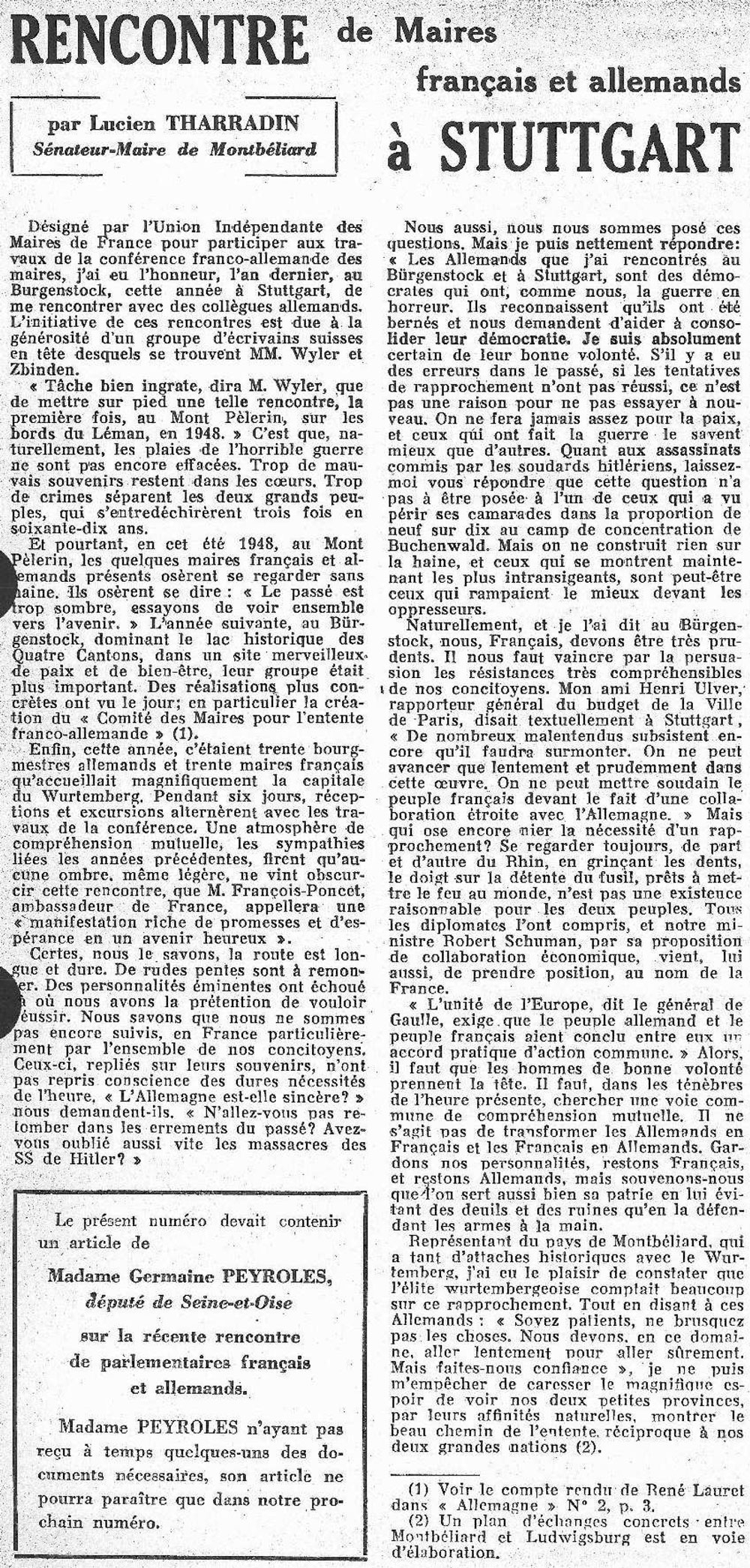The role of Resistance Fighters in the early stages of French-German and European Rapprochement
At the end of World War II, at a time when French and German societies were still steeped in hatred of the “hereditary enemy”, the pioneers of bilateral rapprochement were Christians and members of the Resistance. The former were motivated by forgiveness and reconciliation, while the latter had the strongest legitimacy to reach out to the Germans.
This disposition was linked to the experience of some of them in the concentration camps. Let’s take three of the main figures. The Jesuit Father Jean du Rivau had been detained in Mauthausen and Dachau; the young Joseph Rovan, of German Jewish origin and a member of the French Resistance, had been deported to Dachau; Lucien Tharradin was prisoner of war in Germany, escapee, member of the Resistance and then detained in Buchenwald. In these camps, they had met German resistance fighters and democrats who were also victims of the Nazi regime. It was with them that they wanted to build a new Germany, as Rovan explains in his Memoirs.
Other members of the Resistance, who were not deported, were also convinced that, in order to ensure peace in Europe, German youth had to be offered prospects for the future.
The educational services of the French military government in Germany, responsible for “denazification” through culture and the “re-education” of the Germans after 1945, were headed by two Gaullist resistance fighters with German family origins: Raymond Schmittlein and Irène Giron. They were able to count on Jean du Rivau and Joseph Rovan to organise the first French-German and then international youth meetings in Germany in 1946. Others, such as Tharradin, who became mayor of Montbéliard, worked on the rapprochement from France. In 1950, he initiated the first French-German town twinning with Ludwigsburg. Town twinnings, which flourished in the 1960s and 1970s, were a powerful local factor in the rapprochement between France and the FRG.
Other sectors of the French resistance, often communist, but also socialist, were sensitive to the discourse in the other part of Germany, the GDR, which presented itself as “the better Germany”, “anti-fascist”, and sought rapprochement with East Berlin. German communists involved in the French resistance, such as Gerhard Leo, Dora Schaul and Edith Zorn, also sought to build these bridges. However, as evidenced by youth meetings and twinning arrangements, the French-West German rapprochement took place earlier and more intensively than that with the GDR.
Corine Defrance



